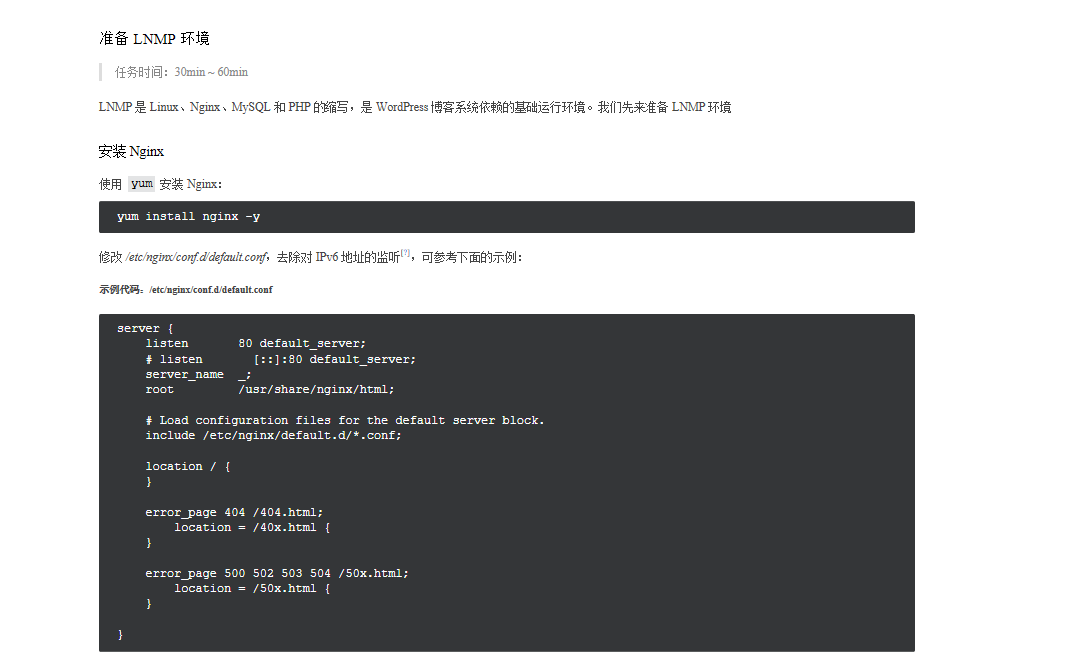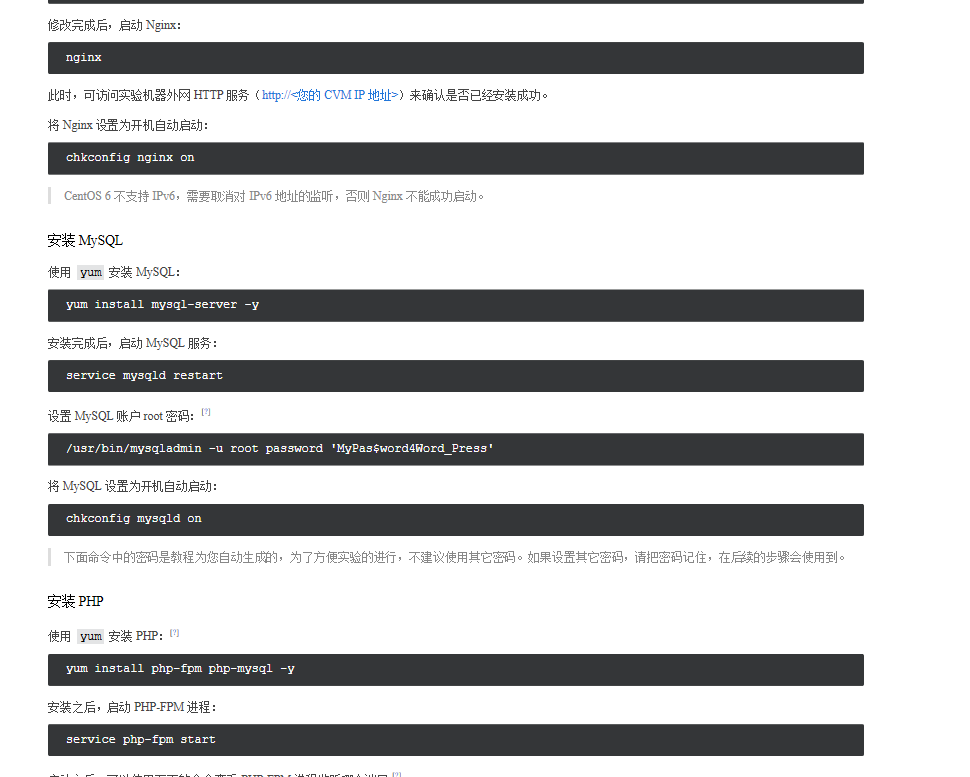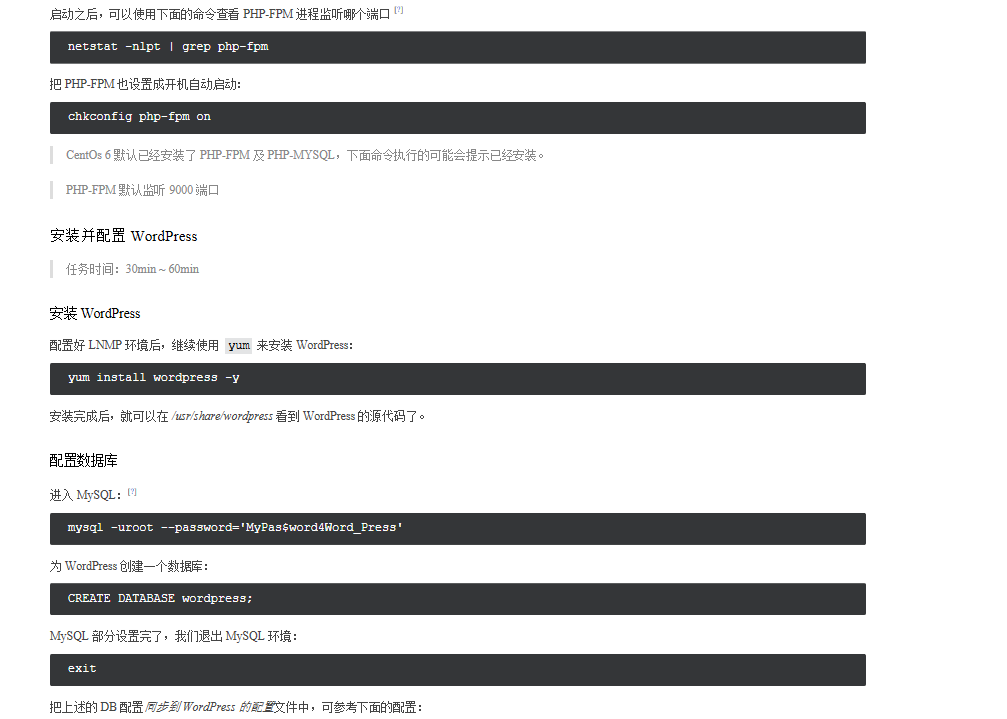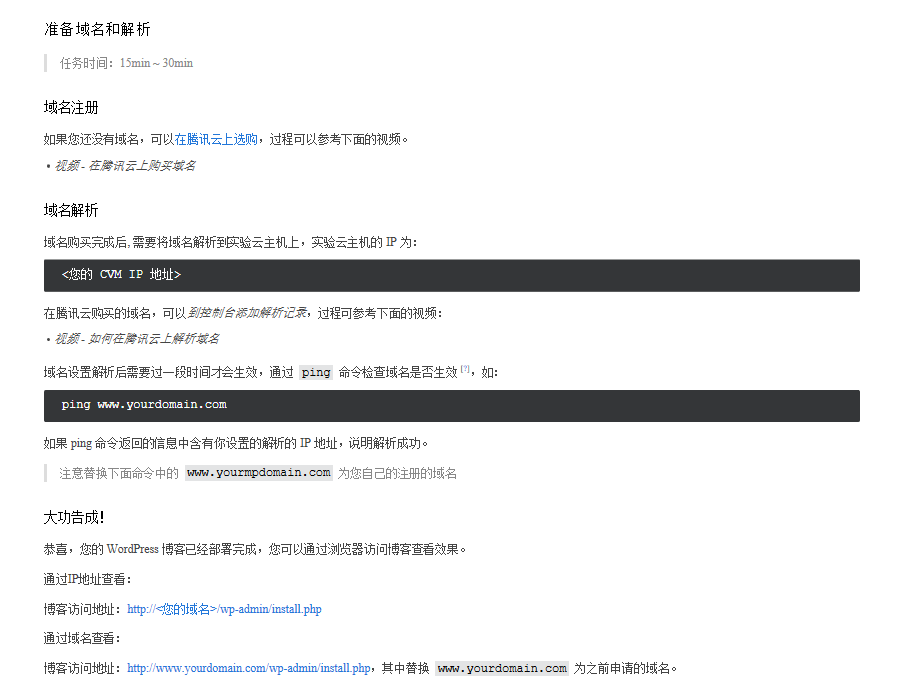基於 CentOS 搭建 WordPress 個人博客



示例代碼:/etc/wordpress/wp-config.php
<?php
/**
* The base configuration for WordPress
*
* The wp-config.php creation script uses this file during the
* installation. You don‘t have to use the web site, you can
* copy this file to "wp-config.php" and fill in the values.
*
* This file contains the following configurations:
*
* * MySQL settings
* * Secret keys
* * Database table prefix
* * ABSPATH
*
* @link https://codex.wordpress.org/Editing_wp-config.php
*
* @package WordPress
*/
// ** MySQL settings - You can get this info from your web host ** //
/** The name of the database for WordPress */
define(‘DB_NAME‘, ‘wordpress‘);
/** MySQL database username */
define(‘DB_USER‘, ‘root‘);
/** MySQL database password */
define(‘DB_PASSWORD‘, ‘MyPas$word4Word_Press‘);
/** MySQL hostname */
define(‘DB_HOST‘, ‘localhost‘);
/** Database Charset to use in creating database tables. */
define(‘DB_CHARSET‘, ‘utf8‘);
/** The Database Collate type. Don‘t change this if in doubt. */
define(‘DB_COLLATE‘, ‘‘);
/**#@+
* Authentication Unique Keys and Salts.
*
* Change these to different unique phrases!
* You can generate these using the [email protected]
* You can change these at any point in time to invalidate all existing cookies. This will force all users to have to log in again.
*
* @since 2.6.0
*/
define(‘AUTH_KEY‘, ‘put your unique phrase here‘);
define(‘SECURE_AUTH_KEY‘, ‘put your unique phrase here‘);
define(‘LOGGED_IN_KEY‘, ‘put your unique phrase here‘);
define(‘NONCE_KEY‘, ‘put your unique phrase here‘);
define(‘AUTH_SALT‘, ‘put your unique phrase here‘);
define(‘SECURE_AUTH_SALT‘, ‘put your unique phrase here‘);
define(‘LOGGED_IN_SALT‘, ‘put your unique phrase here‘);
define(‘NONCE_SALT‘, ‘put your unique phrase here‘);
/**#@-*/
/**
* WordPress Database Table prefix.
*
* You can have multiple installations in one database if you give each
* a unique prefix. Only numbers, letters, and underscores please!
*/
$table_prefix = ‘wp_‘;
/**
* See http://make.wordpress.org/core/2013/10/25/the-definitive-guide-to-disabling-auto-updates-in-wordpress-3-7
*/
/* Disable all file change, as RPM base installation are read-only */
define(‘DISALLOW_FILE_MODS‘, true);
/* Disable automatic updater, in case you want to allow
above FILE_MODS for plugins, themes, ... */
define(‘AUTOMATIC_UPDATER_DISABLED‘, true);
/* Core update is always disabled, WP_AUTO_UPDATE_CORE value is ignore */
/**
* For developers: WordPress debugging mode.
*
* Change this to true to enable the display of notices during development.
* It is strongly recommended that plugin and theme developers use WP_DEBUG
* in their development environments.
*
* For information on other constants that can be used for debugging,
* visit the Codex.
*
* @link https://codex.wordpress.org/Debugging_in_WordPress
*/
define(‘WP_DEBUG‘, false);
/* That‘s all, stop editing! Happy blogging. */
/** Absolute path to the WordPress directory. */
if ( !defined(‘ABSPATH‘) )
define(‘ABSPATH‘, ‘/usr/share/wordpress‘);
/** Sets up WordPress vars and included files. */
require_once(ABSPATH . ‘wp-settings.php‘);


基於 CentOS 搭建 WordPress 個人博客
